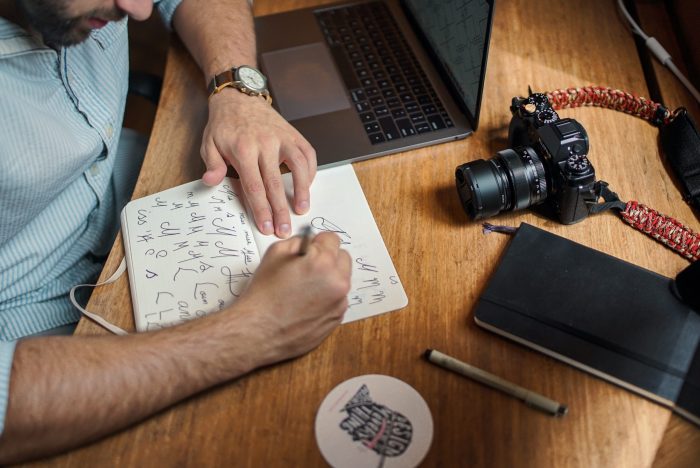Ah, the 1960s.
A time of free love, social reform, Woodstock, and the dawning of the age of Aquarius technology.

Great strides were made during this decade, but tech was largely inaccessible to the general population. You really had to be the proverbial nerd to understand how to use these emerging machines.
Imagine a world where it took hours to compile code, via punch cards and an IBM 026, only to learn you missed a pip and would need to start all over. That’s the environment early computer scientists worked in. They were the real pioneers.
When NASA put a man on the moon, they did so with computers that had 32,728 bits of RAM (just bits, not bytes—and no kilo-, giga-, or tera- prefixes), and only 72KB of ROM. The computer mouse was still novel, having arrived a year before, and Graphic User Interfaces (GUIs) were still almost five years away from being introduced by Xerox. To put this into perspective, the average iPhone today has at least 4GB (34,359,738,368 bits) of RAM and up to 512GB of ROM, plus a smooth operating system/interface and way more practical functionality than the computers NASA used during the Apollo missions.
Reasons abound for why we can wield such power in the palm of our hands now. But what really bridged the technology gap, what made it accessible to the less technically inclined among us, was improved functionality through design. Without pioneers like Alan Kay and the Xerox team, Steve Jobs and Apple, and so many others, we might not have had the intuitive, easy-to-use technology we rely on today, as we readily hand over our phones and tablets to our toddlers and marvel at how effortlessly they navigate to YouTube to watch the latest Ryan ToysReview unboxing.
That is the power of Design. So simple a baby can use it.
In a previous article, I wrote that Design is the look and feel of the technology we use. As such, technology needs both form and function to stay relevant. Without the designs and interfaces that make technology easy to interact with, only rocket scientists and mathematicians would use it regularly, as they did in the 1960s. Thus, while all Five Areas of Tech are equally important, Design may stand slightly taller, as it is the force that makes all other areas more functional or, at least, more accessible.
Have you ever visited a website and thought to yourself, what were they thinking? Or: geez, this is bad; they could make it better by___. If so, Design Technology may be right for you.
So, what are the next steps? How do you start a career in Design Technology? Well, the short answer is, there is no short answer. Design is a field in technology with many possible entry points and no single preferred way of gaining marketable skills. Whether you are looking for a traditional 4-year degree path or want to take a more grassroots approach, a career in Design is not out of reach—even if you don’t consider yourself much of a visual artist (design is more than just how something looks).
Traditional Education Route:
There are numerous pathways one could take to launch a career in Design technology. The University of Nebraska-Lincoln has 49 Design and Creativity Majors, 10 of which are intrinsically tech-based, like Graphic Design. Other majors, such as Art or Marketing, can serve as pathways to Design careers if taken with a minor in technology. Furthermore, if you want something a bit more on-the-nose, the University of Colorado-Boulder provides a Creative Technology and Design program that offers everything from a minor to a Ph.D.
One small caveat on this route: most colleges want students to be well-rounded and will teach various skills no matter what program they attend. In these technology-focused programs, there will likely be at least one or two coding classes (just a heads up in case you absolutely loathe coding). While not universally necessary for Design Technology jobs, acquiring basic coding skills will only help your employability.
Most colleges offer degrees and programs in design that emphasize technology. U.S. News is an excellent resource to research and compare degree programs across universities and colleges. Be sure to check out degree plans too, as they provide valuable insight on what you’ll learn and what classes you are required to take.
Non-Traditional Route:
I am a constant tinkerer. Always learning, always trying something new. A few years ago, on a quest to make a logo for a never-launched furniture refinishing and flipping business, I ran into a program called GIMP. GIMP is an open-source graphic editor comparable to Photoshop. Unlike

Photoshop, it is completely free and has an amazing online community full of users exceptionally willing to share their knowledge.
As you can see from the picture (right), I am by no means a graphic designer. However, I did create something that wasn’t there before. And I learned a skill that has served me well; I have used GIMP countless times in job-related tasks since. Also, most of the tools in GIMP do have a Photoshop counterpart, so the skills are transferable with just a bit of familiarization.
I bring this up because you do not need formal training to do this. If you have an eye for design and a willingness to learn, there are countless free or super-cheap resources at your disposal. All it takes is a little bit of hustle and dedication. Money for classes should not be a barrier to your success.
Graphic design not your thing? There are just as many resources out there for WordPress and web design.
Looking for something a little more structured? Try Google or LinkedIn. Both platforms have learning portals. In fact, Google is currently offering a free trial of their Grow With Google training programs. There is even a class in User Experience Design enrolling now. LinkedIn also has several learning aids ranging from complete courses to shot 10-minute design videos.
If Design interests you, don’t be afraid to explore unique ways of learning and figure out what works for you. There are several ways to land a job in Design Technology. Whether you prefer formal training or the do-it-yourself route, Design careers offer a great way to explore your passion while making a living.
One last note, most people working in Design careers, especially freelancers and consultants, need a portfolio of previous work. Be sure to create some stellar examples of your work to woo potential employers.
Still not sure exactly how to start? The AIM Institute offers a free Tech Navigator service where specially trained college and career counselors can help develop a plan that is right for you.




